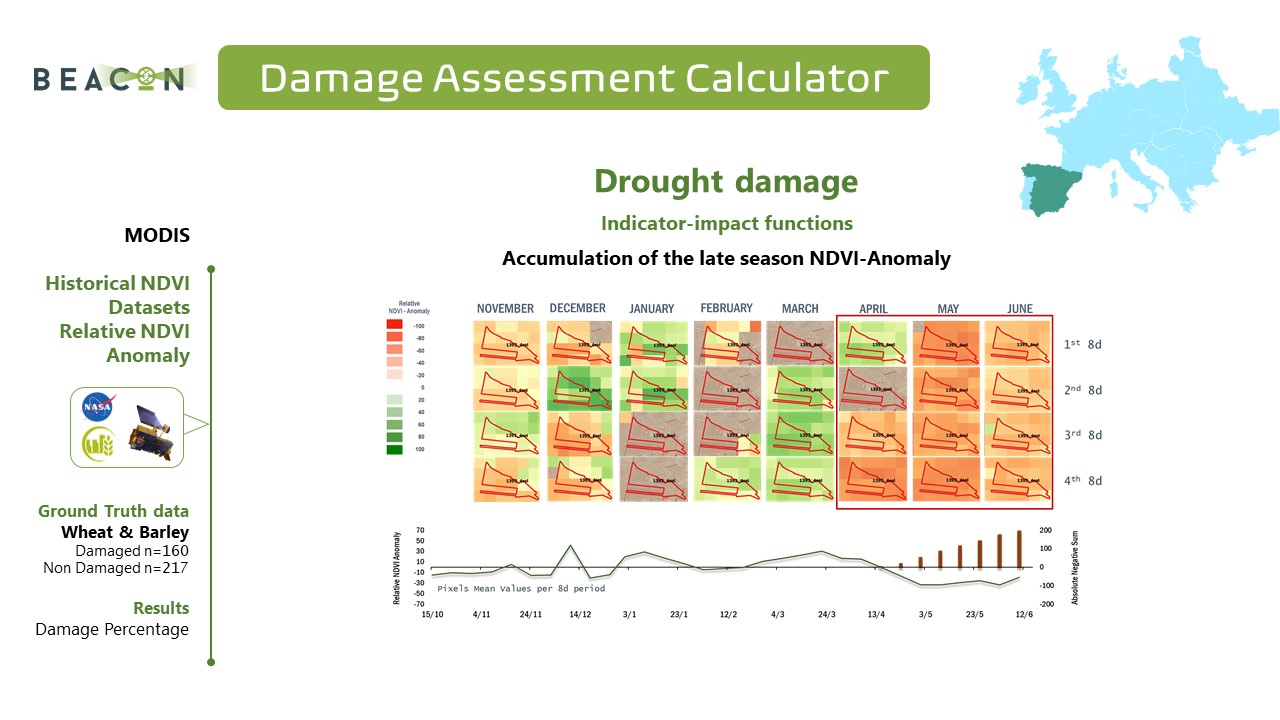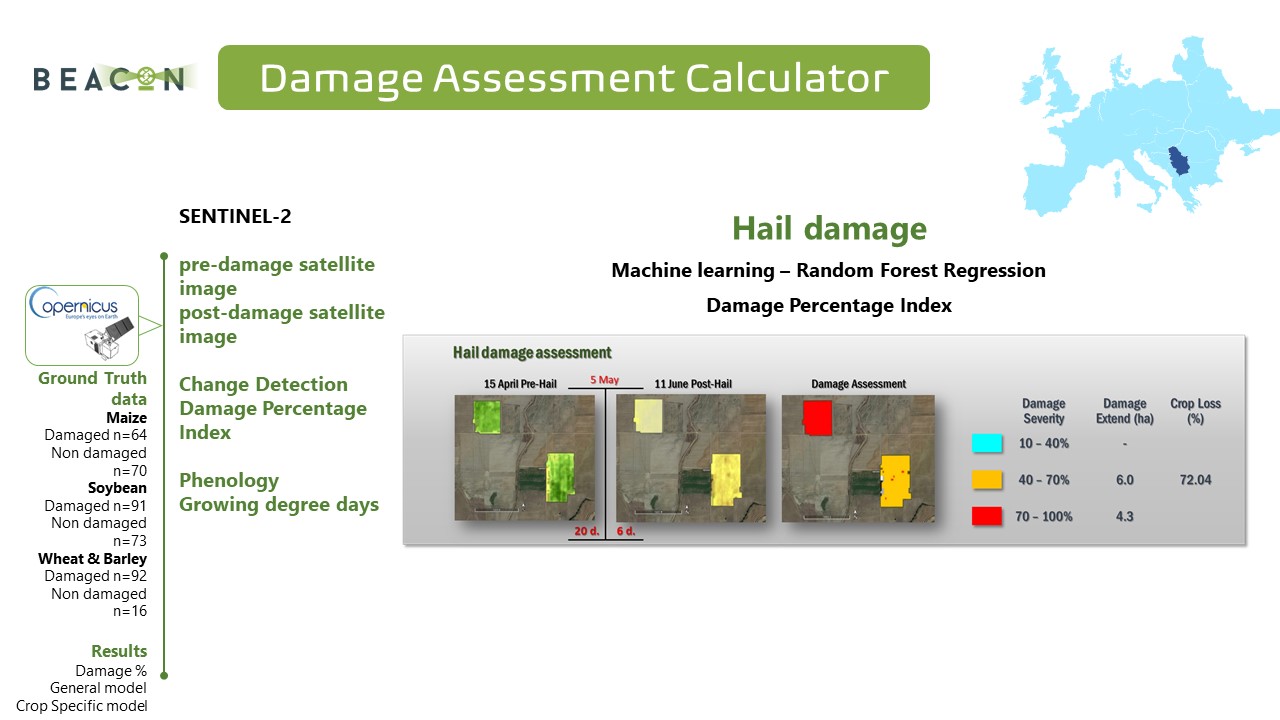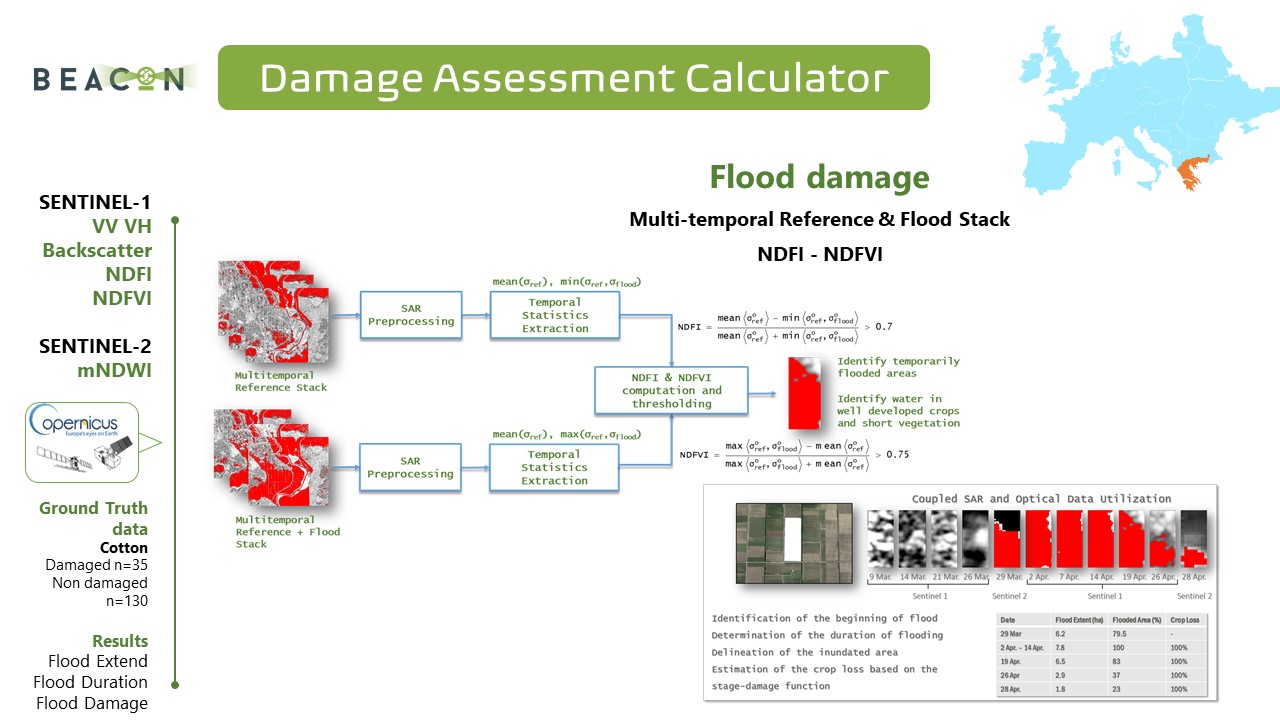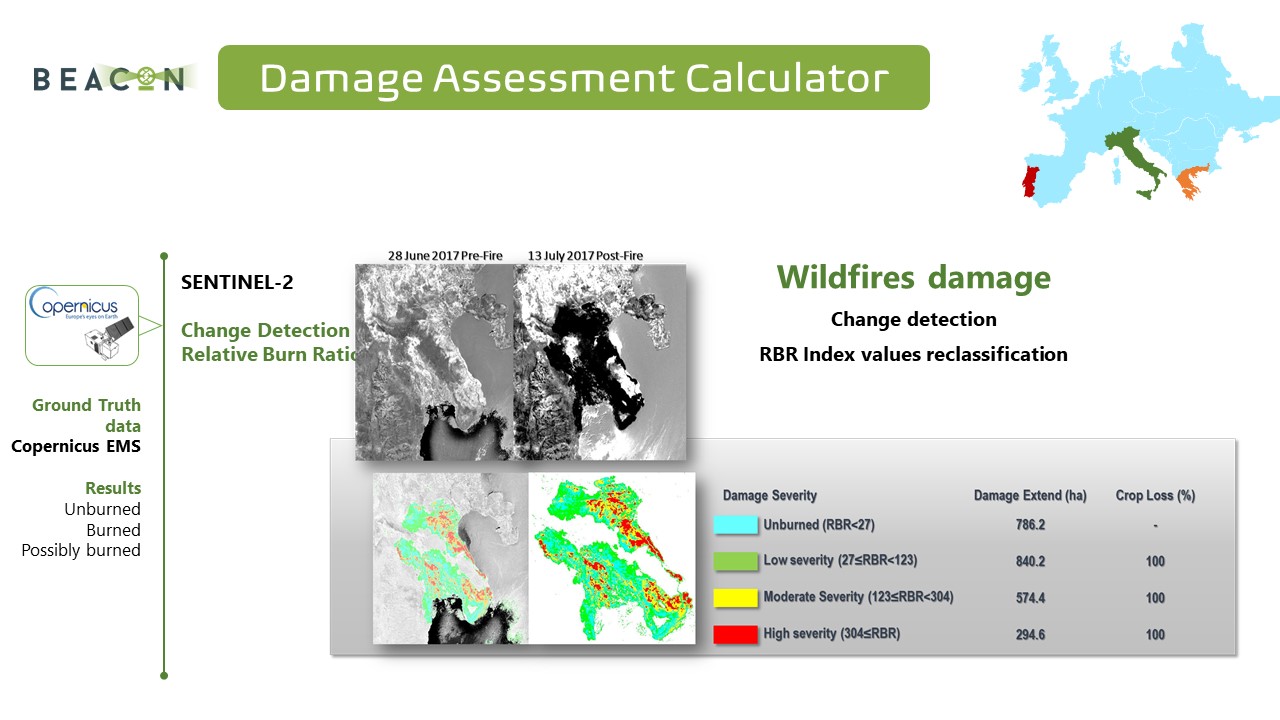Newsletter ![]() Issue #6
Issue #6 ![]() January 2021
January 2021
- Editorial
- The BEACON Damage Assessment Calculator
- The BEACON Lighthouse Customers
- Upcoming events
- In case you missed
- Join us
Editorial
![]() The BEACON team wishes you all, a Happy and prosperous New Year!
The BEACON team wishes you all, a Happy and prosperous New Year!
May 2021 be a year of joy, health, and success!
In this issue, BEACON is presenting the Damage Assessment Calculator following the project’s progress. The Lighthouse Customers’ section is dedicated to our international LHCs, whilst top stories of the AgI sector are presented in case you missed them over your holidays.
We invite you to regularly view our videos on YouTube, browse our rich in content project website and follow us on social media to learn more about our project’s progress and findings.
Follow us and stay informed on the latest project developments!
The BEACON Damage Assessment Calculator
Agricultural Insurance is the most weather dependent sector among insurance services. The significant impact of climate change on crop production causes a great uncertainty about the levels of risk involved in Agricultural Insurance provision.
Ideally, when performing damage assessment and the handling of claims, the insurer attempts to check and verify the damage personally or obtain an independent damage assessment. In many cases, this is not financially feasible given that onsite damage assessment is costly, resulting to higher premiums in the market.
When performing an audit in the field, insurance agents are by human nature less objective and less “independent” making assessments partially “biased” resulting in higher costs for agricultural insurance companies.
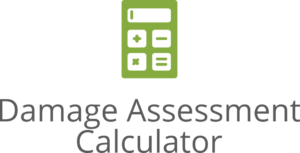
The Damage Assessment Calculator of BEACON is expected to provide timely and accurate forecasts of the potential losses and indemnities, as well as, offer lower financial risks by reducing the cost of field visits and increasing farmers confidence in the estimation results.
BEACON quantifies one of the main challenges of Claim Based Agricultural Insurance, which is crop damage assessment. To accomplish this, a MULTI SATELLITE approach is employed to provide safe and reliable results on hailstorm, flood, wildfire and drought damage. BEACON exploits three satellite constellations for damage assessment. These are Sentinel 1, Sentinel 2 and MODIS.
Specifically, BEACON uses the MODIS Terra NDVI for agricultural drought detection, monitoring and crop loss assessment. The MODIS NDVI datasets, at 250 m resolution, are available from 2001. The NDVI Anomaly produced throughout the growing season is used for the quantification of Final Received Yield after damage and the damage percentage.
For an effective hail event coverage, an image acquisition strategy is followed in BEACON to ensure that the pre- and post-damage imagery are as representative as possible of the insured crop’s condition. Afterwards, the Difference Percentage Index (DPI), is calculated with the VI differencing technique, by the pre- and post- hazard satellite image. DPI records the % change of the indices in the pre- and post- hazard crop status, and is used for damage spatial distribution and severity classification in the final image. Differencing is applied on a number of optical satellite data derived indices obtained before and after a damage, that are then used to feed a machine learning model for hail quantitative damage estimation.
In BEACON, SAR and optical data are utilized for flood damage assessment. SAR data assist in monitoring flood extent, damage and duration and fill the gaps of optical data acquisition. Their synergistic use enables BEACON to identify the beginning, the duration and the extent of flooding with a significant accuracy.
A robust severity metric applicable across broad geographic regions and fire regimes, is used for fire detection. The Relativized Burn Ratio index derived from optical satellite data is used for fire damage assessment, mapping and severity classification. This index is designed to detect change even where pre-fire vegetation cover is low.
The next steps, that we wish to undertake in the frame of BEACON, are:
![]() To increase the AgI actors and the number of pilots and validate BEACON in a global scale.
To increase the AgI actors and the number of pilots and validate BEACON in a global scale.
![]() To market launch the full BEACON toolbox by 2021, covering the most important crops, worldwide.
To market launch the full BEACON toolbox by 2021, covering the most important crops, worldwide.
The BEACON Lighthouse Customers
The BEACON Lighthouse Customers (LHC), the group of well-established Agricultural Insurance providers that will be involved in the co-development and co-validation process of the BEACON toolbox, is constantly expanding and reaches over the EU boundaries.
Three of our international partners are presented below...
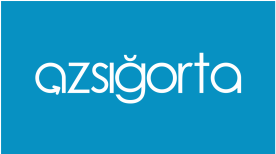 AZSIĞORTA is one of the largest private insurance companies in Azerbaijan with a comprehensive service portfolio of insurance programs. AZSIĞORTA offers all classic insurance products (except life insurance), as well as reinsurance support. AZSIĞORTA is widely represented in the regions of Azerbaijan: there are about 200 agents, 7 branches and 2 representative offices in the country.
AZSIĞORTA is one of the largest private insurance companies in Azerbaijan with a comprehensive service portfolio of insurance programs. AZSIĞORTA offers all classic insurance products (except life insurance), as well as reinsurance support. AZSIĞORTA is widely represented in the regions of Azerbaijan: there are about 200 agents, 7 branches and 2 representative offices in the country.
Financial and Insurance Services – Socodevi (Canada) ![]()
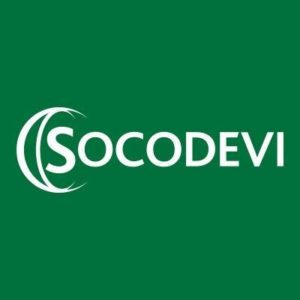 SOCODEVI is a network of cooperative and mutual enterprises that shares its expertise and know-how with its partners in developing countries to create, protect and distribute wealth. SOCODEVI in agricultural risk management deploys solutions to help rural families gain access to land, inputs, agricultural credit and insurance products. Strategic partnerships are established with leading players in the industry to leverage local processes.
SOCODEVI is a network of cooperative and mutual enterprises that shares its expertise and know-how with its partners in developing countries to create, protect and distribute wealth. SOCODEVI in agricultural risk management deploys solutions to help rural families gain access to land, inputs, agricultural credit and insurance products. Strategic partnerships are established with leading players in the industry to leverage local processes.
HDFC ERGO General Insurance Company (India) ![]()
 HDFC ERGO General Insurance Company Ltd. is a joint venture between HDFC Ltd., India’s premier Housing Finance Institution and ERGO International AG, the primary insurance entity of Munich Re Group. The company offers products in the retail, corporate and rural sectors. The rural sector caters the farmers with crop insurance and cattle insurance.
HDFC ERGO General Insurance Company Ltd. is a joint venture between HDFC Ltd., India’s premier Housing Finance Institution and ERGO International AG, the primary insurance entity of Munich Re Group. The company offers products in the retail, corporate and rural sectors. The rural sector caters the farmers with crop insurance and cattle insurance.
Upcoming events
![]() 2021 CIRB Annual Meeting
2021 CIRB Annual Meeting
![]() February 4, 2021
February 4, 2021
![]() Online
Online
![]() Website
Website

The Crop Insurance and Reinsurance Bureau Executive Committee invites you to attend the upcoming 2021 CIRB Annual meeting on the 4th of February 2021 hosted on Zoom. CIRB’s 57th Annual Meeting will feature distinguished speakers and opportunities to interact with leaders in the industry. The agenda of the Annual Meeting focuses on the 2021 Economic Outlook & Policy Forecast, Crop Insurance Legal Challenges, and hosts a panel on Climate Change. The CIRB Annual Meeting will feature a dynamic line-up of speakers and networking opportunities.
![]() ICFRM 2021: International Conference
ICFRM 2021: International Conference
on Flood Risk Management
![]() February 15-16, 2021
February 15-16, 2021
![]() Digital: London, UK
Digital: London, UK
![]() Website
Website

The International Conference on Flood Risk Management aims to bring together leading academic scientists, researchers and research scholars to exchange and share their experiences and research results on all aspects of Flood Risk Management. It also provides a premier interdisciplinary platform for researchers, practitioners and educators to present and discuss the most recent innovations, trends, and concerns as well as practical challenges encountered and solutions adopted in the fields of Flood Risk Management.
![]() Global Agriculture Technology Summit 2021
Global Agriculture Technology Summit 2021
![]() February 16-17, 2021
February 16-17, 2021
![]() Online
Online
![]() Website
Website

The Global Agriculture Technology Summit 2021 with the presence of key industry players will focus on current issues and emerging opportunities through the lens of science and technology. The summit will also focus on mixtures of topics such as Women in AgTech, FinTech and Farm Insurance, Vertical Farming, Driving Agribusiness E-commerce and Digital Marketplace, AgriFood Systems Innovation to Achieve Sustainable Development Goals, Planning for the Uncertainties – Crisis Response and Mitigation Planning to Ensure Business-As-Usual.
![]() ICARM 2021: International Conference on Agrometeorology and Risk Management
ICARM 2021: International Conference on Agrometeorology and Risk Management
![]() March 4-5, 2021
March 4-5, 2021
![]() Digital: Rome, Italy
Digital: Rome, Italy
![]() Website
Website

The International Conference on Agrometeorology and Risk Management aims to bring together leading academic scientists, researchers and research scholars to exchange and share their experiences and research results on all aspects of Agrometeorology and Risk Management. It also provides a premier interdisciplinary platform for researchers, practitioners and educators to present and discuss the most recent innovations, trends, and concerns as well as practical challenges encountered and solutions adopted in the fields of Agrometeorology and Risk Management.
![]() ERME National Conference
ERME National Conference
![]() March 23-25, 2021
March 23-25, 2021
![]() Online
Online
![]() Website
Website

The 2021 Extension Risk Management Education National Conference will bring together public and private sector educators, crop insurance agents, lenders, and other agricultural professionals to share ongoing and emerging successful risk management education efforts that target agricultural producers and their families. Conference participants will learn about efficient solutions that can help producers effectively manage the financial, production, marketing, legal and human risks associated with their agribusinesses.
![]() BLOCKCHANCE EUROPE 2021
BLOCKCHANCE EUROPE 2021
![]() July 7-9, 2021
July 7-9, 2021
![]() Hamburg, Germany
Hamburg, Germany
![]() Website
Website

BLOCKCHANCE is Germany’s leading Blockchain Technology conference with trade fair. It introduces the focus topics Digital Assets, AI, Green Technology and Sustainability. Its mission is to educate about economic perspectives and social changes and chances brought to us by Blockchain and Distributed Ledger Technologies. The conference will create a networking, match-making and education platform for c-levels, investors, entrepreneurs, politicians, IT experts, scientists, students and the interested public.
In case you missed

India's crop insurance programme embraces modern techniques and international (re)insurers
The Indian crop insurance scheme is currently focused on digitization. This reform is expected to both help make access easier for users, but also to reduce operating costs, by making use of weather models that allow a more effective claims’ management, and by minimizing the need for onsite monitoring. The introduction of a three-year contract for insurers is another step forward. Read more...

Insurers Increase Digital Spending
as 2021 Gets Going
2020 was a year that no one forgets, with Covid-19 forcing disruption on every business, industry and person on the planet. The insurance industry has received one of the most significant blows due to the losses associated with pay-outs relating to the pandemic. According to a survey sponsored by EIS and based on an analysis of the responses of 1,057 consumers of insurance services and 73 industry players of the Insuretech Insight (ITI), the pace of digital change of the insurance sector seems to accelerate. Read more...

Blockchain in agrifood:
A great opportunity…
disguised as a trend?
Blockchain is portrayed as a great opportunity for the agrifood sector, able to guarantee transparency and immutability to data produced throughout the supply chain. As a result, it’s also said to be able to generate higher revenues thanks to a renewed confidence on the part of the end consumer, who can get to know every detail of the product he is buying. Read more...

PARM joins
the InsuResilience Global Partnership
The Platform for Agricultural Risk Management (PARM) has officially become a member of the InsuResilience Global Partnership (IGP), marking an important step to bolster mutual collaboration. This is a key acknowledgment of PARM’s reputation and continued dedication to strengthening the resilience of agricultural value chain actors. Through this membership, PARM gains enhanced access to knowledge, finance, expertise, and services, as well as an increased opportunity to contribute to future policy, practice, and investments. Read more...

A digital tool to help African farmers
in the battle against locusts unveiled
A free tool that will help farmers across Africa to predict and control locust behaviour has been launched. Kuzi—the Swahili name for the wattled starling, a bird renowned for eating locusts—is an Artificial Intelligence-powered tool that generates a real-time heatmap of locusts across Africa. Using satellite data, soil sensor data, ground meteorological observation, and machine learning, Kuzi can predict the breeding, occurrence and migration routes of desert locusts across the horn of African and Eastern African countries, and uses deep learning to identify the formation of locust swarms. Read more...
Join us
Do you want to stay up to date with all the latest BEACON news?
Do you have any questions or would like to get in touch with us to share your insights, feedback or opinions?
sign up to our mailing list...
follow us on social media...


